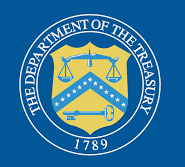
On January 4, 2024 the New York City Comptroller posts online the many benefits to New York City taxpayers the immigrants bring to the city. In case you have not read or viewed this public statement, you may want to take a closer look and comment on your experience of the use of New York State/City taxes. With one of the highest, if not the highest tax rates in the country, taxpayers should know how their tax money is spent. This message below comes straight out of the New York Government website with the direct link at the bottom of this article as proof. Just in case you cannot believe it. We would love to hear from New Yorkers or those taxpayers who left New York in our commentary section below. We would love for you to educate taxpayers, too!
Background: Busting Myths About Immigration
As New York City welcomes over 100,000 new arrivals seeking asylum, it is critical to ground conversations on immigration in facts, not fear. This fact sheet seeks to provide accurate information on key questions.
FACT: Immigrants Benefit Our Economy, Irrespective Of Their Status
Immigrants strengthen our economy as workers, entrepreneurs, taxpayers, and consumers:
- Immigrant New Yorkers are more likely to be employed,[1] are more likely to create jobs[2] by starting a business, and contribute billions of dollars to our New York economy in spending power and tax revenue.[3]
- In 2021, immigrant New Yorkers paid[4] $61 billion dollars in taxes and constituted $138 billion dollars in spending power.
- When New York City faced abandonment and fiscal crisis in the 1970s, a strong wave of immigration contributed to public safety, increased the city’s population, and boosted public revenues.[5]
- Our upstate neighbors Rochester, Syracuse, and Utica[6] experienced an economic revitalization after welcoming new arrivals, who have opened new businesses, contributed to population growth, rebuilt homes,[7] and contributed millions in taxes and spending power.[8]
Welcoming Asylum Seekers Is A Net Positive To The Economy
- Conservative estimates have found that a 10% reduction in asylum seekers in one year would be a $8.9 billion loss[9] to the U.S. economy and over $1.5 billion in lost tax revenue over five years.
Undocumented immigrants[10] support economic growth, pay taxes, and keep our city and economy running as essential workers.




























Recent Comments